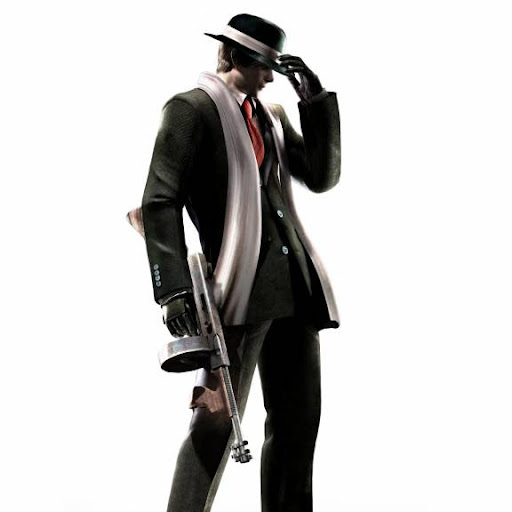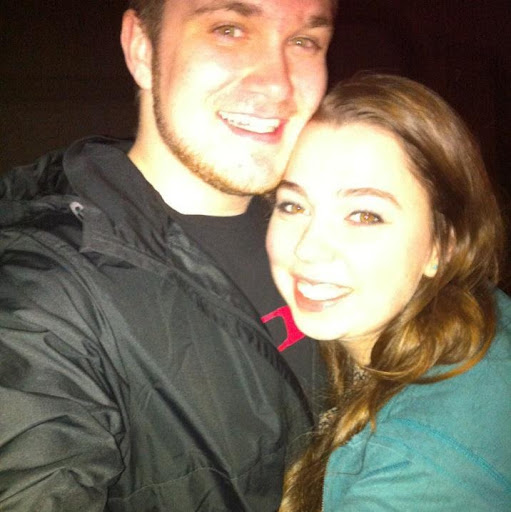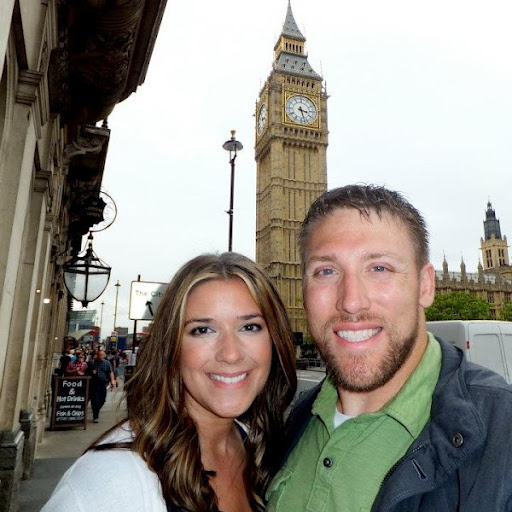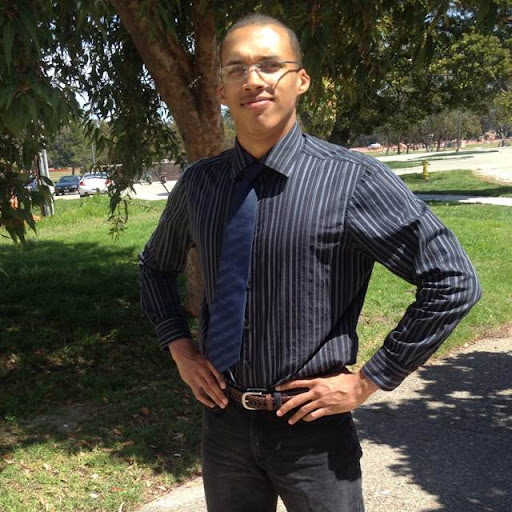Daniel James Rader
age ~44
from Pacific Grove, CA
- Also known as:
-
- Daniel J Rader
- Daniel R Rader
Daniel Rader Phones & Addresses
- Pacific Grove, CA
- Marina, CA
- Monterey, CA
- Seaside, CA
- San Francisco, CA
- Salinas, CA
- Las Vegas, NV
- Sandy, UT
- 1050 Pine St APT 1, San Francisco, CA 94109
Work
-
Company:Shooting stars productions - school and youth sports photographyJun 2009
-
Position:Sales representative/new accounts coordinator
Education
-
School / High School:New York University- New York, NY2000
-
Specialities:B.S. in Communications Studies
Ranks
-
Licence:Virginia - Authorized to practice law
-
Date:2008
Specialities
Legal Ethics and Professional Responsibility • Medical Malpractice Defense • Civil Rights Defense • Civil Litigation and Appeals • Governmental Tort Liability Law/Litigation • Education Law • General Liability Defense • Workers Compensation Defense
Isbn (Books And Publications)

The Journalists and the July Revolution in France: The Role of the Political Press in the Overthrow of the Bourbon Restoration 1827-1830
view sourceAuthor
Daniel L. Rader
ISBN #
9024715520
Medicine Doctors

Daniel J. Rader
view sourceSpecialties:
Cardiovascular Disease
Work:
Preventative CardiologyPenn Heart & Vascular Center
3400 Civic Ctr Blvd East Pav, Philadelphia, PA 19104
(215)6154949 (phone), (215)6140069 (fax)
3400 Civic Ctr Blvd East Pav, Philadelphia, PA 19104
(215)6154949 (phone), (215)6140069 (fax)
Education:
Medical School
Medical College of Pennsylvania
Graduated: 1984
Medical College of Pennsylvania
Graduated: 1984
Procedures:
Cardiac Stress Test
Electrocardiogram (EKG or ECG)
Electrocardiogram (EKG or ECG)
Conditions:
Disorders of Lipoid Metabolism
Ischemic Heart Disease
Bronchial Asthma
Cardiac Arrhythmia
Diabetes Mellitus (DM)
Ischemic Heart Disease
Bronchial Asthma
Cardiac Arrhythmia
Diabetes Mellitus (DM)
Languages:
English
Description:
Dr. Rader graduated from the Medical College of Pennsylvania in 1984. He works in Philadelphia, PA and specializes in Cardiovascular Disease. Dr. Rader is affiliated with Hospital Of The University Of Pennsylvania.
Name / Title
Company / Classification
Phones & Addresses
RADER TRUCKING, INC
Us Patents
-
Opposed-Flow Virtual Cyclone For Particle Concentration
view source -
US Patent:61562122, Dec 5, 2000
-
Filed:Feb 3, 1999
-
Appl. No.:9/244259
-
Inventors:Daniel J. Rader - Lafayette CA
John R. Torczynski - Albuquerque NM -
Assignee:Sandia Corporation - Livermore CA
-
International Classification:B01D 2126
G01N 100 -
US Classification:210788
-
Abstract:An opposed-flow virtual cyclone for aerosol collation which can accurately collect, classify, and concentrate (enrich) particles in a specific size range. The opposed-flow virtual cyclone is a variation on the virtual cyclone and has its inherent advantages (no-impact particle separation in a simple geometry), while providing a more robust design for concentrating particles in a flow-through type system. The opposed-flow virtual cyclone consists of two geometrically similar virtual cyclones arranged such that their inlet jets are inwardly directed and symmetrically opposed relative to a plane of symmetry located between the two inlet slits. A top plate bounds both jets on the "top" side of the inlets, while the other or lower wall curves "down" and away from each inlet jet. Each inlet jet will follow the adjacent lower wall as it turns away, and that particles will be transferred away from the wall and towards the symmetry plane by centrifugal action. After turning, the two jets merge smoothly along the symmetry line and flow parallel to it through the throat.
-
Thermophoretic Vacuum Wand
view source -
US Patent:6072157, Jun 6, 2000
-
Filed:Dec 11, 1998
-
Appl. No.:9/210348
-
Inventors:Leonard Elliott Klebanoff - San Ramon CA
Daniel John Rader - Lafayette CA -
Assignee:EUV LLC - Santa Clara CA
-
International Classification:B25J 1506
B66C 102
H01L 2168 -
US Classification:219228
-
Abstract:A thermophoretic vacuum wand that is particularly suited for transporting articles in a cleanroom environment so that potential particle contaminants in the air do not become adhered to the surface of the article is described. The wand includes a housing having a platen with a front surface with suction port(s) through the platen; a vacuum source for applying a negative pressure to the suction port(s); and heating device for the object. Heating the article when it is held by the vacuum wand affords thermophoretic protection that effectively prevents particles in the air from depositing onto the article.
-
Thermophoretic Vacuum Wand
view source -
US Patent:62325787, May 15, 2001
-
Filed:Mar 23, 2000
-
Appl. No.:9/533600
-
Inventors:Leonard Elliott Klebanoff - San Ramon CA
Daniel John Rader - Lafayette CA -
Assignee:BUV LLC - Santa Clara CA
-
International Classification:B25J 1506
B66C 102
H01L 2168 -
US Classification:219228
-
Abstract:A thermophoretic vacuum wand that is particularly suited for transporting articles in a cleanroom environment so that potential particle contaminants in the air do not become adhered to the surface of the article is described. The wand includes a housing having a platen with a front surface with suction port(s) through the platen; a vacuum source for applying a negative pressure to the suction port(s); and heating device for the object. Heating the article when it is held by the vacuum wand affords thermophoretic protection that effectively prevents particles in the air from depositing onto the article.
-
Method For Protection Of Lithographic Components From Particle Contamination
view source -
US Patent:62534645, Jul 3, 2001
-
Filed:Aug 18, 2000
-
Appl. No.:9/642222
-
Inventors:Leonard E. Klebanoff - San Ramon CA
Daniel J. Rader - Lafayette CA -
Assignee:Euv LLC - Santa Clara CA
-
International Classification:F26B 504
-
US Classification:34403
-
Abstract:A system that employs thermophoresis to protect lithographic surfaces from particle deposition and operates in an environment where the pressure is substantially constant and can be sub-atmospheric. The system (thermophoretic pellicle) comprises an enclosure that surrounds a lithographic component whose surface is being protected from particle deposition. The enclosure is provided with means for introducing a flow of gas into the chamber and at least one aperture that provides for access to the lithographic surface for the entry and exit of a beam of radiation, for example, and further controls gas flow into a surrounding low pressure environment such that a higher pressure is maintained within the enclosure and over the surface being protected. The lithographic component can be heated or, alternatively the walls of the enclosure can be cooled to establish a temperature gradient between the surface of the lithographic component and the walls of the enclosure, thereby enabling the thermophoretic force that resists particle deposition.
-
Protection Of Lithographic Components From Particle Contamination
view source -
US Patent:61530441, Nov 28, 2000
-
Filed:Apr 30, 1998
-
Appl. No.:9/071359
-
Inventors:Leonard E. Klebanoff - San Ramon CA
Daniel J. Rader - Lafayette CA -
Assignee:EUV LLC - Santa Clara CA
-
International Classification:C23F 102
C23C 1600 -
US Classification:156345
-
Abstract:A system that employs thermophoresis to protect lithographic surfaces from particle deposition and operates in an environment where the pressure is substantially constant and can be sub-atmospheric. The system (thermophoretic pellicle) comprises an enclosure that surrounds a lithographic component whose surface is being protected from particle deposition. The enclosure is provided with means for introducing a flow of gas into the chamber and at least one aperture that provides for access to the lithographic surface for the entry and exit of a beam of radiation, for example, and further controls gas flow into a surrounding low pressure environment such that a higher pressure is maintained within the enclosure and over the surface being protected. The lithographic component can be heated or, alternatively the walls of the enclosure can be cooled to establish a temperature gradient between the surface of the lithographic component and the walls of the enclosure, thereby enabling the thermophoretic force that resists particle deposition.
Resumes

Daniel Rader
view source
Daniel Rader
view source
Daniel Rader
view source
Daniel Rader San Francisco, CA
view sourceWork:
Shooting Stars Productions - School and Youth Sports Photography
Jun 2009 to Present
Sales Representative/New Accounts Coordinator New America Media/Pacific News Service - Community Media Consortium
San Francisco, CA
Oct 2007 to Nov 2008
Directory Manager/ Communications Officer California Center
San Francisco, CA
Aug 2007 to Oct 2007
Database Coordinator/Consultant eChalk Inc
New York, NY
Oct 2004 to Jun 2007
Regional Sales Administrator/Corporate Administrative Assistant
Jun 2009 to Present
Sales Representative/New Accounts Coordinator New America Media/Pacific News Service - Community Media Consortium
San Francisco, CA
Oct 2007 to Nov 2008
Directory Manager/ Communications Officer California Center
San Francisco, CA
Aug 2007 to Oct 2007
Database Coordinator/Consultant eChalk Inc
New York, NY
Oct 2004 to Jun 2007
Regional Sales Administrator/Corporate Administrative Assistant
Education:
New York University
New York, NY
2000 to 2004
B.S. in Communications Studies
New York, NY
2000 to 2004
B.S. in Communications Studies
Lawyers & Attorneys

Daniel Scott Rader - Lawyer
view sourceLicenses:
Virginia - Authorized to practice law 2008

Daniel Rader - Lawyer
view sourceOffice:
Moore, Rader, Fitzpatrick and York, P.C.
Specialties:
Legal Ethics and Professional Responsibility
Medical Malpractice Defense
Civil Rights Defense
Civil Litigation and Appeals
Governmental Tort Liability Law/Litigation
Education Law
General Liability Defense
Workers Compensation Defense
Medical Malpractice Defense
Civil Rights Defense
Civil Litigation and Appeals
Governmental Tort Liability Law/Litigation
Education Law
General Liability Defense
Workers Compensation Defense
ISLN:
904255018
Admitted:
1974
University:
Vanderbilt University, B.A., 1971
Law School:
University of Tennessee, J.D., 1974
Plaxo

Daniel Rader
view sourcePast: Communications Director and Directory Manager at New America Media

Daniel Rader
view source
Daniel Rader
view source
Jose Daniel Rader
view source
Daniel Rader
view source
Daniel Rader
view source
Daniel Rader
view source
Daniel Rader
view source
Daniel James Rader
view sourceYoutube
Classmates

Daniel Rader
view sourceSchools:
Baylor High School Chattanooga TN 1991-1995
Community:
David Green, Frank Durand

Daniel Rader
view sourceSchools:
White Sulphur Springs High School White Sulphur Springs MT 1975-1979
Community:
Thomas Graham, Wendy Smith, Ken Mikesell, Laura Gendron, Bernadette Kary

Daniel Rader
view sourceSchools:
High Point Baptist Academy Geigertown PA 1982-1986
Community:
Christopher Sackal, Dorene Wilhelm

Daniel Rader, Tinora High...
view source
Daniel Rader, Highland Hi...
view source
Daniel Rader, Orestimba H...
view source
Dan Rader, Central High S...
view sourceNews

New, old drugs may offer fresh ways to fight heart disease
view source- Scientists have been exploring gene therapy altering DNA to attack the root cause of many diseases. The new drugs essentially accomplish the same thing without tampering with genes, said the University of Pennsylvanias Dr. Daniel Rader, who has consulted for some makers of these drugs.
- Date: Nov 18, 2019
- Category: Health
- Source: Google

Scientists May Have Figured Out Why Olive Oil Is So Healthy
view source- Still, the findings add to a growing body of research suggesting that HDL function may influence cardiovascular disease risk, Dr. Daniel Rader of the University of Pennsylvania in Philadelphia writes in an accompanying editorial.
- Date: Feb 14, 2017
- Category: Health
- Source: Google

It's all good: Any exercise cuts risk of death, study finds
view source- I dont know that were ready to say, based on this study, that people shouldnt try to exercise more than that if they can, said Dr. Daniel Rader, preventive cardiology chief at the University of Pennsylvania. People who exercise more regularly report that they feel like they have a better quali
- Date: Jan 09, 2017
- Category: Health
- Source: Google

'good' cholesterol can sometimes be bad
view source- Our results indicate that some causes of raised HDL actually increase risk for heart disease, said lead researcher Daniel Rader of the University of Pennsylvania. This is the first demonstration of a genetic mutation that raises HDL, but increases risk of heart disease. The scientists found that
- Date: Mar 11, 2016
- Category: Health
- Source: Google

New cholesterol-lowering drugs hold promise, at a huge projected price tag
view source- Statins can reduce LDL by 30% to 50%. PCSK9 inhibitors may be slightly more potent, reducing LDL by 40% to 60%, said Daniel Rader, a professor at the Perelman School of Medicine at the University of Pennsylvania, who has served as an adviser to Sanofi, which makes one of the new drugs. Doctors coul
- Date: Jun 08, 2015
- Source: Google

New Link Found Between Red Meat and Heart Disease: an Intestinal Bacteria
view source- Daniel Rader, Director of Preventive Cardiovascular Medicine at the University of Pennsylvania in Philadelphia, who was not involved in the research, concluded that the study makes a fairly compelling case that intestinal bacteria feeding on l-carnitine increase the risk of heart disease, accord
- Date: Apr 09, 2013
- Category: Health
- Source: Google

CETP Inhibitor Evacetrapib Scores Big in Cholesterol Battle
view source- anacetrapib and dalcetrapib. Interestingly, evacetrapib at 500 mg had a similar effect as anacetrapib 100 mg on HDL-C (129% vs. 138%) and LDL-C (136% vs. 40%), but appeared to have a greater impact on triglycerides (17% vs. 7%), observed Dr. Daniel Rader, who was invited to discuss the paper.
- Date: Nov 16, 2011
- Category: Health
- Source: Google

Lilly Study Shows Experimental Drug Boosts Good Cholesterol
view source- Merck & Co. and Roche also have CETP drugs in development. Daniel Rader, scientific director of clinical research at the cardiovascular institute of the University of Pennsylvania, said the three CETP inhibitors target the same mechanism but work in different ways.
- Date: Nov 15, 2011
- Category: Health
- Source: Google
Myspace
Flickr
Googleplus

Daniel Rader

Daniel Rader

Daniel Rader

Daniel Rader

Daniel Rader

Daniel Rader

Daniel Rader

Daniel Rader
Get Report for Daniel James Rader from Pacific Grove, CA, age ~44












